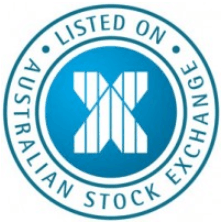
Despite being a fairly quiet day on the markets, client activity has been fairly upbeat with a number looking to trade eBay’s monster after-market rally, while there was also good buying in Tesla and Apple.
It would be good to see US earnings pick-up and cause an increase in sentiment again, as daily ranges in the S&P 500 are getting to fairly low levels, with a 35 handle range seen in the S&P (350 point range in the Dow) over the past nineteen trading sessions. I feel we will see this low index volatility environment for a while longer, but there are plenty of catalysts being thrown around by the bears to try and create a sense of concern in the investment and trading community. Of course the irony of this newsflow is that the more bearish the sentiment in the markets, the more likely we are to climb the so-called wall of worry and new highs seen in Europe and US most likely.
An issue that was widely talked about on Monday was a potential default (in China) of the RMB3 billion investment trust product known as Credit Equals Gold No.1. There is actually an argument that allowing this product to fail would be positive given the limited amount of people directly involved in any default and effectively it could send out a strong warning to the public about the risk factors involved in these products.
It may even lower the incentives for banks to market these products to the public, thus reducing the levels funds the banks receive, which ultimately get lent out, thus helping consolidate credit. Recall the Chinese public have been huge investors in these high yielding wealth-management products (WMP’s) for long periods of time, so a default here could cause flow on effects into the wealth management space and it’s the unknown contagion effects that the bears have been actively trying to point out.
From all accounts we are going to see this investment trust in question being bailed out and investors made right and this could materialise next week. The Chinese market hasn’t really responded in kind to this speculation and seems to going through the motions and it took a poor flash manufacturing PMI number to bring out sellers. Certainly the HSBC PMI print at 49.6 brings manufacturing in the small business sector back into contraction, after expanding modestly for five months. This flash print could be revised on January 30, while the larger ‘official’ print is released on February 1.
Chinese data staging a meaningful drop
We initially saw some buying after a weaker open in the ASX 200, however the Chinese numbers subsequently smacked the market fairly hard, with resources names predictably at the heart of the move. Naturally the AUD saw good sellers, and anyone thinking yesterday’s Q4 CPI report was a game-changer for the local unit has been mistaken. Who would want to be a central banker? However you have to give it to the RBA, which has the conundrum of shaping monetary policy in an ailing labour market, with rising inflation, falling terms of trade and a major trading partner with manufacturing consistently oscillating around contraction and expansion. What are they to do? Much of the price pressure was caused by weather-related food inflation and holiday-linked costs. The swaps market, which is now pricing in three basis points of hikes over the year, seems fair.
AUD/USD rejected the 38.2% retracement of the January 13 to January 19 sell-off at 0.8888 overnight and traders continue to use any rallies as a selling opportunity. Against the NZD the pair looks to want to test 1.0600 again and having spent 57 trading session below the 21-day moving average, you have to go back to the mid-90’s to get a longer consecutive run below this short-term average.
We’ve even seen better selling of the AUD against the CAD, which tells you something, given the CAD was smashed from pillar to post against everything overnight as the Bank of Canada talked down the CAD, ironically in a move very reminiscent of the RBA a month or so ago. It really is hard to see the AUD going anywhere fast given the market continues to focus on the RBA’s easing bias, with traders also using the AUD to hedge emerging market and China risks. A sizeable move north in Australian terms of trade seems the only way right now, as interest rates aren’t going up at least for six months if at all.
European calls following the move lower in the S&P futures
We have seen better sellers of European markets; however this seems a reaction to the pullback in S&P futures after the China numbers. There has been some buying of the break higher in GBP/AUD and you have to think this pair is destined for 1.9249 (the 38.2% retracement of the 2008 to 2013 sell-off) and at some stage this year the 2.00 level comes into play. Doing business with Britain is getting more and more expensive by the day, especially when the UK economy seems to be doing everything right. Where would sterling be if it wasn’t for the high current account deficit? You’d have to think much higher, and while there are risks for sterling on this deficit, staying long GBP/CAD and GBP/AUD seems one of the markets preferred trades right now.
In terms of equities a flat open is expected, however on the docket we have a raft of US firms set to report, with Microsoft and McDonalds taking centre stage. We also get manufacturing PMI from France, Germany and the Euroarea, while employment numbers are released in Spain and Holland. In the US we get jobless claims and existing home sales.